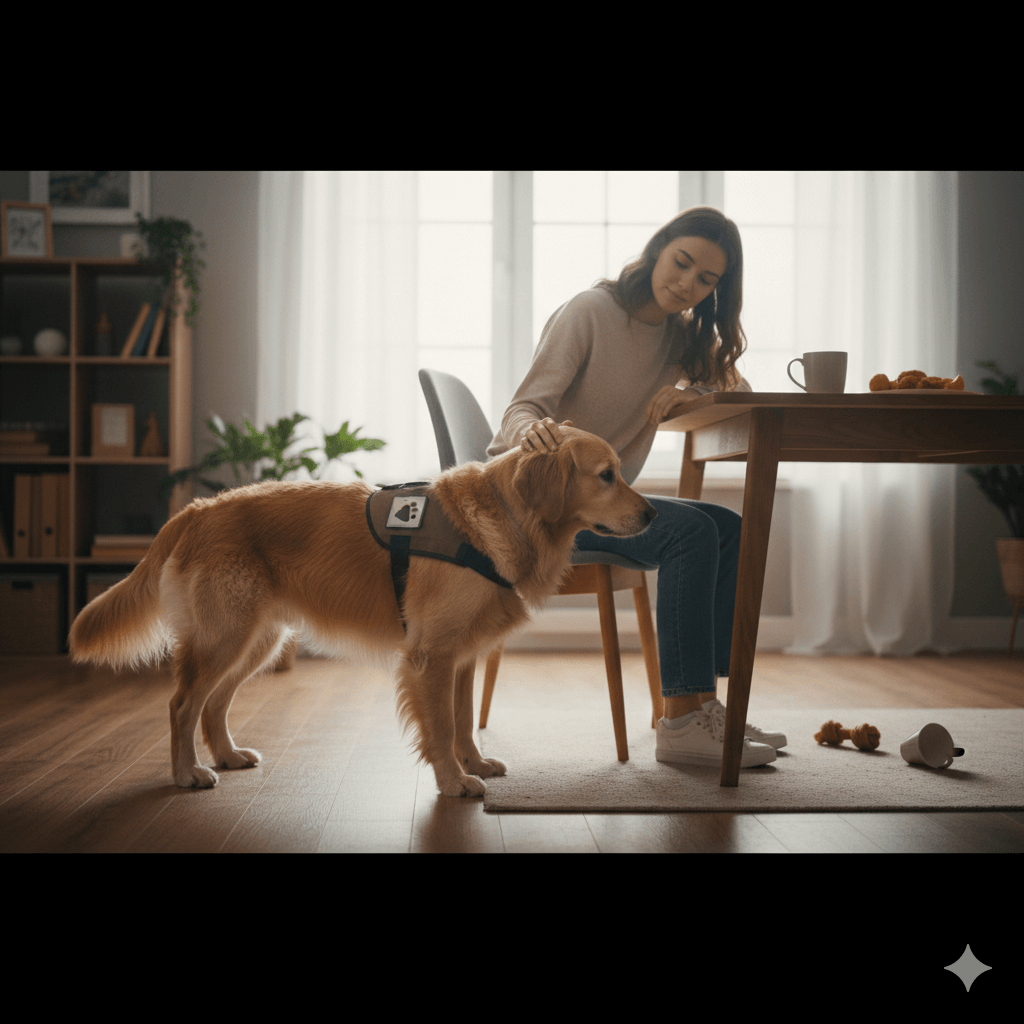What Can Trigger a Seizure in a Dog? Understanding the Causes
Witnessing your dog experience a seizure can be a frightening and confusing experience. These episodes, which may range from mild trembling to full-blown convulsions, can leave pet owners feeling helpless and concerned. But what exactly causes seizures in dogs? While some triggers are related to underlying health conditions, others may stem from environmental factors or even dietary issues. In this blog post, we’ll explore the various potential triggers of seizures in dogs, how to identify them, and steps you can take to minimize risks. By understanding these triggers, you can better protect your furry friend and ensure they receive the care they need.
Common Triggers of Seizures in Dogs
Seizures in dogs can be caused by a wide range of factors, and identifying the trigger is key to managing the condition effectively. Below are some of the most common culprits behind canine seizures:
Epilepsy: Idiopathic epilepsy, a genetic condition, is one of the leading causes of seizures in dogs, particularly in breeds like Beagles and Labrador Retrievers.
Toxins: Exposure to harmful substances such as antifreeze, pesticides, or certain human medications can induce seizures in dogs.
Brain Tumors: Abnormal growths in the brain can disrupt normal neural activity, leading to seizure episodes.
Liver Disease: Conditions like hepatic encephalopathy, where the liver fails to filter toxins from the blood, can result in seizures.
Low Blood Sugar (Hypoglycemia): A drop in blood sugar levels, especially in small breeds or diabetic dogs, can trigger seizures.
Understanding these potential triggers can help you take preventive measures and seek timely veterinary care when needed. Always consult a professional if your dog experiences a seizure for proper diagnosis and treatment.
Environmental Factors That May Cause Seizures
In addition to medical conditions, external factors in your dog’s environment can also play a role in triggering seizures. Here are some environmental influences that pet owners should be aware of:
Extreme Temperatures: Prolonged exposure to heat or cold can stress your dog’s body, potentially leading to seizures in vulnerable individuals.
Stress or Anxiety: Sudden changes in routine, loud noises, or unfamiliar surroundings can overstimulate your dog’s nervous system.
Electrical Shocks: Accidental exposure to electrical currents, such as chewing on cords, can cause neurological disturbances and seizures.
Food Sensitivities: Certain foods, like those containing artificial additives or xylitol, may act as seizure triggers in sensitive dogs.
Poisonous Plants: Ingesting toxic plants like sago palm or oleander can lead to poisoning and subsequent seizures.
By minimizing exposure to these environmental triggers, you can create a safer and more stable living environment for your dog. Always monitor their surroundings closely to prevent accidents.
Check this guide 👉Can Vestibular Disease Kill a Dog? Best 7 Expert Tips!
Check this guide 👉What to Feed a Dog with Inflammatory Bowel Disease: Best 7 Tips

Medical Causes of Seizures | Environmental Triggers |
|---|---|
Epilepsy | Extreme temperatures |
Brain tumors | Stress or anxiety |
Liver disease | Electrical shocks |
Hypoglycemia | Food sensitivities |
Toxin exposure | Poisonous plants |
How to Identify Potential Triggers in Your Dog
If your dog has experienced a seizure, pinpointing the underlying cause is essential for effective management. Here are some steps you can take to identify potential triggers:
Keep a Seizure Diary: Record details such as the time, duration, and circumstances surrounding each episode to spot patterns.
Monitor Diet and Treats: Take note of any recent changes in your dog’s food or treats that could have triggered a reaction.
Evaluate Environmental Changes: Consider whether recent events, like moving homes or introducing new pets, may have caused stress.
Check for Toxin Exposure: Inspect your home and yard for potential hazards, such as chemicals or poisonous plants.
Consult Your Veterinarian: Share your observations with your vet, who may recommend diagnostic tests to rule out specific causes.
Identifying triggers can significantly improve your ability to manage your dog’s condition and reduce the frequency of seizures. Work closely with your veterinarian to develop a tailored plan.
Steps to Minimize Seizure Risks for Your Dog
Once you’ve identified potential triggers, taking proactive steps to minimize risks can help keep your dog safe and healthy. Here’s how you can reduce the likelihood of seizures:
Provide a Balanced Diet: Feed high-quality food free of artificial additives and ensure your dog stays hydrated.
Maintain a Consistent Routine: Stick to regular feeding, walking, and sleeping schedules to reduce stress and anxiety.
Pet-Proof Your Home: Remove or secure hazardous items like electrical cords, cleaning products, and toxic plants.
Limit Exposure to Stressors: Avoid exposing your dog to loud noises, crowded spaces, or other stressful situations whenever possible.
Schedule Regular Vet Check-Ups: Early detection of underlying health issues can prevent complications that may lead to seizures.
By implementing these preventive measures, you can create a safer environment for your dog and potentially reduce the frequency or severity of seizures.
Recognizing Early Warning Signs of Seizure Triggers
Early detection of potential seizure triggers can help you take preventive action before an episode occurs. Here are some signs that your dog may be at risk for seizures:
Behavioral Changes: Sudden aggression, confusion, or disorientation can indicate neurological issues.
Excessive Drooling or Panting: These symptoms may suggest stress, anxiety, or exposure to toxins.
Loss of Balance or Coordination: Difficulty walking or frequent stumbling could signal underlying brain abnormalities.
Increased Sensitivity to Stimuli: Reacting strongly to light, sound, or touch may indicate heightened nervous system activity.
Unusual Fatigue or Lethargy: Persistent tiredness or lack of energy could point to metabolic imbalances like hypoglycemia.
By staying alert to these warning signs, you can address potential triggers early and seek veterinary guidance to prevent further complications.
How to Comfort and Reassure Your Dog After a Seizure
Seizures can leave dogs feeling frightened, disoriented, and vulnerable. Providing emotional support is crucial to helping them recover and feel safe. Here’s how you can comfort your dog after a seizure:
Speak Softly and Calmly: Use soothing tones to reassure your dog and reduce their anxiety.
Create a Quiet Space: Allow your dog to rest in a peaceful, low-stimulation environment to recover fully.
Offer Gentle Affection: Light petting or cuddling can help your dog feel secure without overwhelming them.
Avoid Overstimulation: Keep noise, activity, and other pets to a minimum until your dog regains composure.
Reward Calm Behavior: Positive reinforcement with treats or praise can encourage relaxation and trust.
By focusing on your dog’s emotional well-being, you can help them regain confidence and feel loved, even after a challenging episode.
Steps to Ensure a High Quality of Life for Your Dog
Managing a dog with recurring seizures requires ongoing care and attention. By implementing long-term strategies, you can minimize risks and ensure your dog enjoys a fulfilling life. Here are some key steps to consider:
Administer Medications as Prescribed: Consistent use of anti-seizure medications is critical for controlling episodes and improving quality of life.
Monitor Health Regularly: Schedule routine blood tests and check-ups to assess the effectiveness of treatment and detect side effects early.
Adjust Diet as Needed: Work with your vet to tailor your dog’s diet to their specific needs, such as reducing allergens or incorporating supplements.
Maintain a Stress-Free Environment: Avoid unnecessary disruptions and provide plenty of opportunities for rest and relaxation.
Educate Yourself on Emergency Care: Learn how to respond during a seizure and keep emergency contact numbers handy for quick access.
With dedication and care, you can help your dog live comfortably despite their condition. A proactive approach ensures both you and your furry friend are prepared for any challenges ahead.
Frequently Asked Questions About Seizures in Dogs
What should I do if my dog has a seizure?
Stay calm, remove nearby objects to prevent injury, and time the seizure. Contact your veterinarian afterward for advice.
Can seizures be cured in dogs?
While some causes, like epilepsy, can be managed with medication, not all seizures can be completely cured.
Are certain dog breeds more prone to seizures?
Yes, breeds like Beagles, German Shepherds, and Border Collies are more susceptible to idiopathic epilepsy.
Can diet affect my dog’s seizures?
Some dogs benefit from a low-carbohydrate, high-fat diet (ketogenic diet), but always consult your vet before making changes.
What household items can trigger seizures?
Items like antifreeze, chocolate, and certain cleaning products can be toxic and lead to seizures if ingested.
Final Thoughts: Supporting Your Dog Through Seizures
Understanding what can trigger a seizure in a dog is the first step toward providing the care and support your furry companion needs. Whether the cause is medical, environmental, or genetic, being vigilant and proactive can make a significant difference in managing your dog’s condition. By working closely with your veterinarian, maintaining a safe environment, and staying informed about potential risks, you can help your dog live a happier, healthier life. Remember, your love and dedication mean the world to your dog, and together, you can navigate this challenge with strength and compassion.
Understanding Bone Supplement for Cats: Best 7 Expert Tips! – Safe, vet-approved guidance for strong feline bones & balanced nutrition.
Bone Supplement for Dogs: Best 7 Expert Tips! – Expert guide to calcium, collagen & bone health for every life stage.
Understanding Can Cats Get Sunburn: Best 7 Expert Tips! – Protect your feline from UV damage with vet-backed prevention strategies.
How to Train a Seizure Alert Dog: Best 7 Expert Tips! – Learn expert-backed steps to nurture natural instincts into reliable, life-saving seizure alerts.





